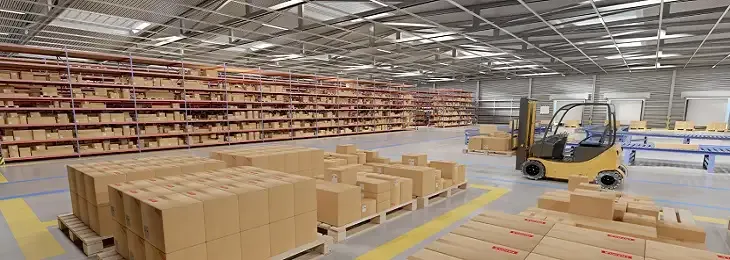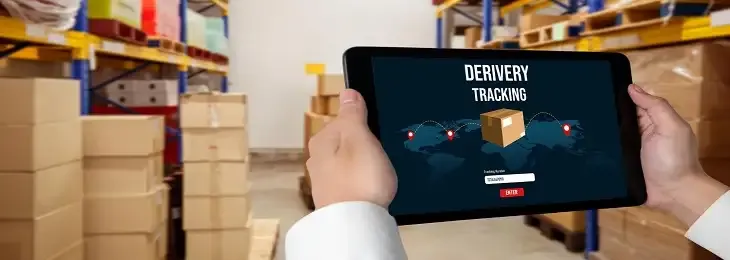Inventory management is a critical aspect of any business that holds stock, whether it's a manufacturer, distributor, or retailer. An effective inventory management system can help a company minimize inventory costs, optimize stock levels, and improve customer satisfaction. In this blog, we will dive into the world of inventory management, exploring the different types of inventory systems and the key components of an effective inventory management strategy. We will also discuss the latest technologies and tools available for inventory management, such as barcoding, RFID, and cloud-based software. Whether you're a small business owner looking to improve your inventory management process or a manager in a larger organization seeking to optimize your inventory systems, this blog will provide valuable insights and information to help you better understand and utilize inventory management.
What Is Inventory Management?

Inventory management is the process of organizing raw materials, components and finished items, storing them in the warehouse, and managing their processing routes and requirements. It also involves procedures of order management and sales management.
The inventory system of a business is a valuable asset, and its efficiency is dependent on inputs by other business verticals such as purchase modules, material requirements planning and production demand inputs. Every business relies on a unique inventory management process to streamline inventories precisely so that stock concerns can be avoided. The inventory process followed by them may use methods like Just-In-Time (JIT), ABC Analysis or another method.
What Is Inventory Management System?

Inventory management system is an automated tool to streamline inventory tracking right from order entry and production, up to final product delivery. It eliminates the necessity of using ledgers or spreadsheets for manual entry of inventory data, enabling advanced inventory management and tracking.
The main purpose of an inventory management system is to maintain a balance between under-stocking and overstocking scenarios, to ensure optimum stock levels. An inventory management system analyzes demand and supply trends within the company to achieve this balance. It is adaptable to a business of any size, and can save the company from financial losses by ensuring error-free inventory handling.
Read Also: real-time platform
How Does Inventory Management Work?

Inventory includes the raw materials, equipment and semi-finished components used for production. It also refers to the finished goods sold by a business to consumers at a profit.
Inventory management essentially aims to have the right products in the right place at the right time. This is only possible with live inventory visibility which facilitates the knowledge of when to order, at what quantity and how much stock needs to be stored. The steps of efficient inventory management are as follows:
1. Purchasing inventory: In this step, raw materials are bought, and delivered to the storehouse for further processing and production.
2. Storing inventory: Inventory purchased is stored until it needs to be processed further as per customer orders. When required, products are then transferred and processed across the fulfillment network, before they are ready for shipment.
3. Profiting from inventory: Inventory valuation and costing methods are leveraged to ensure inventory processes are always operating within cost limits, and remain profitable. This step also controls management of the finished products, and the number of items to be sold and shipped to the customers.
Read Also: purchasing
Importance of Inventory Management

Inventory management is crucial for accurately tracking inventory, reconciling inventory regularly with reduced manual efforts, and for avoiding shortages and overstocking. It offers oversight into every item's location and status.
It also provides a clean record of your inventory while streamlining reordering procedures. The consumption data updates you about the timing of product reordering. Effective management of inventory also helps to monitor product demand, and match current stock levels on the system with physical stock in the warehouse.
By implementing a modern system for inventory management, SME business owners can prevent unnecessary reordering of products, manage production cycles better and enhance supply chain management, inventory forecasts for seasonal buys, and manage multiple warehouses easily.
Read Also: inventory levels
Types of Inventory Management Systems

Understanding diverse objectives of an inventory management system and adopting the best software, empowers you to gain a competitive edge in the manufacturing industry. That's why, we have discussed the various types of inventory management systems for your reference, as following:
Periodic Inventory Management System
This is a method of evaluating inventory to support financial reporting necessities. In this method, the physical count of inventory is determined at specific intervals. This method counts the amount of inventory at the beginning, and adds to the new purchases during the same period. Then, the closing inventory is deducted to derive the cost of sold goods.
Perpetual Inventory Management System
Perpetual inventory management updates all inventory records in real time. One of the benefits of this style is that it provides updated inventory-level data and can lower the number of physical checks necessary.
Barcode Inventory Management System
The barcode system for inventory management uses barcodes to assign specific numbers to each product sold. This number can include data points such as the supplier, weight, product dimensions and other variable details.
Barcoding is one of the best types of inventory management systems as it ensures faster inventory updation while saving significant costs and time.
RFID Inventory Management System
Radio-frequency Identification (RFID) is an inventory management system that can wirelessly transmit the details of a product. This is done in the form of an exclusive serial number to track items and provide product data. This system improves efficiency, ensures self-recording of delivery and receipt, and increases inventory visibility.
Read Also: just-in-time (JIT) system
Features of Effective Inventory Management System

Inventory management has some unique features to help businesses analyze inventory at regular intervals. Key features of inventory management are as follows:
Inventory management & tracking
The process of inventory management facilitates categorization and measurement of products in stock and their quantities, cycle counting, live stock reporting and order management. This process also enables product tracking, tagging, inventory costing and stock audit functions.
Efficient inventory updation
Inventory management equips department managers to leverage tools such as barcode scanning and order integration tools, to seamlessly update and track inventory, and view customer information from anywhere.
Automated reordering
Reordering items is an important step as it must be executed right in time, before the product entirely runs out of stock. At the same time, inventory managers also need to avoid oversupply. These checks can be automated with an effective inventory management software, especially when you deal with seasonal products or products with dynamic demands.
Reporting features
Inventory management also enables detailed inventory reporting and analysis. This is helpful to oversee sales history and latest inventory movements. It also provides insight into the most popular products, and also benefits internal inventory audits.
Read Also: Easy Stock Monitoring
Benefits of Effective Inventory Management

There are several advantages of inventory management system such as:
Improved control and accuracy
The most important benefit of inventory management is that it provides an end-to-end, automated overview of every inventory item movement, for all required staff members. This enables inventory teams to monitor and control stock closely, fill orders and manage backorders in a more organized way.
Enhanced support across all inventory stores
Manufacturing SMEs often have warehouses and stores across the country, and they need a centralized inventory system to supervise inventory in all these locations. An inventory management system enables access to multiple stores without any manual effort.
Orders placed at any point of sales are automatically updated across all stores, leading to real-time inventory count. This improves internal processes, coordination between all stores in the business, and saves time.
Insightful forecasting and decision making
An inventory management system ensures a centralized record of each asset in the organization. It provides a single source of data for every item, with specifications, supplier and vendor information and the number of out-of-stock items.
Real-time data such as this equips your team to monitor stock trends, ensure that the inventory is always optimally balanced and make data-driven inventory forecasts for smooth production processes.
Increased cost-saving and productivity
Inventory teams are able to identify sales trends, gain insights into best-selling products, and also track recalled products. They're always informed, if or not, there is adequate stock of product supplies for production. This reduces unnecessary carrying and handling costs.
Automated visibility of inventory also removes the chances of human error. In this way, an inventory software ensures higher productivity at every stage, leading to time saved that can be spent on other activities.
Real-time overview of stock availability and demand leads to higher inventory turnover, which ultimately leads to greater profits.
Customer and vendor relationship management
Seamless inventory operations across all stores, improves internal collaboration enabling enhanced relationships with vendors and better negotiation of terms. In addition to this, faster inventory processes, reduced delays and errors, lead to improved order delivery and happier customers.
Especially when the inventory module of an SME business is integrated with other core functions such as production, sales and purchases, it leads to significant ease in inventory management, operational efficiencies and cost savings.
Read Also: optimizes inventory management
When Should You Move to Inventory Management Systems?
Moving onto an inventory management and inventory control system can equip you to derive significant value out of your inventory processes.
We have listed the factors that will help you to decide when you should opt for an inventory management system.
Flexibility
Excel spreadsheets are difficult to use when managing inventory. They hinder easy and real-time information access. To solve problems like this, you should consider adopting an inventory management system that automates inventory tracking and control.
Accuracy
The devil is in the details when it comes to inventory management. If you're unable to get accurate insights about your inventory operations, then you should leave behind manual stock management processes and upgrade to an automated inventory management system. It will empower you to know exactly when you need new stock, and also provide live data on how your inventory is performing.
Growing Inventory costs
Mismanaged inventory with zero control can lead to high holding costs and wastage of stockroom space. Moving to an advanced inventory system helps to cut down holding costs, costs incurred due to delay in reordering, and other related inventory costs.
Read Also: Credit Note Format - Free Download
Future of Inventory Management
Today, technology, cloud and digitization have enabled businesses to solve key inventory problems and achieve higher inventory stability with ease. Smart inventory software is powering SMEs to access continued automation in stock operations for real-time insight and accurate inventory monitoring. With these developments, the future of inventory management promises proactive detection of errors and resolution of delays in inventory management.
For SME manufacturers especially, this means affordable access to a cloud-based stock management system that is hassle-free, intuitive, prevents downtime and saves costs.
Speed Up Your Business With a Robust Inventory Management Solution
TranZact's inventory management system brings advanced capabilities like automated inventory valuation, stock adjustment and barcode tracking for SME manufacturing businesses](/blogs/manufacturing-business-ideas).
It is integrated with all core functions including transactions, material requirements planning and production, to offer simplified and convenient inventory management on a centralized platform. This ensures stock levels are auto maintained, reordering processes are streamlined and production teams have all items required without any delays.
Therefore, with TranZact you can ensure error-free inventory processes, higher business productivity and satisfied customers at all times!
FAQs on Inventory Management System
Q1. What are the 4 inventory management systems?
The four inventory management systems commonly used are the periodic inventory system, the perpetual system, the barcode system, and the radio-frequency identification (RFID) inventory management system.
Q2. What is the main purpose of inventory management?
The main purpose of inventory management is to ensure efficient tracking, control, and optimization of stock levels to meet customer demand while minimizing costs.
Q3. How does an inventory management system work?
An inventory management system typically integrates with a company's enterprise resource planning (ERP) or point of sale (POS) system. With this integration, it tracks inventory movements, updates stock levels, generates purchase orders, manages sales orders, and provides insights into inventory performance.
Q4. How can an inventory management system help your business save money?
An inventory management system can help your business save money by minimizing stockouts, reducing excess inventory, optimizing order quantities, and streamlining operational processes.
Q5. What is inventory visibility?
Inventory visibility means gaining traceability of inventory on hand, monitoring its live location, and cross-functional inventory movements.
Q6. What are the functions of an inventory management system?
The primary functions of an inventory management system include automation of inventory operations in order to avoid shortage and overstocking, with the lowest possible costs. By analyzing inventory input, processes, and order fulfillment, an inventory management system facilitates efficient sales operations, production, and improved business productivity.
Q7. Which is the best inventory management system for small businesses?
The best inventory management system for small businesses is the one that reduces the manual effort to manage inventory for business owners. SMEs have multiple operations going on at the same time. Therefore, they require a simple and cost-effective inventory solution that ensures real-time inventory control, automates purchase and re-ordering processes, controls wastage of resources, and helps to save working capital.
TranZact ensures all of this, is reasonably priced, and is also very easy to use and understand. It does not need extensive user training and is built especially for small and medium-scale enterprises. Since all its features are specific to SME requirements, it becomes the best software for inventory management for small businesses.
Q8. What are the best inventory management tools?
TranZact is a zero-effort business automation software with a dedicated inventory module for SMEs. It is the best inventory management tool because it integrates inventory processes with the sales, purchases, and production functions of a business.
It is a cloud-based software that provides real-time inventory overview across multiple stores. Further, TranZact also offers smart business dashboards with reporting and analytical solutions. Thereby, it enables inventory teams to get stock insights quickly and fulfill orders seamlessly.















